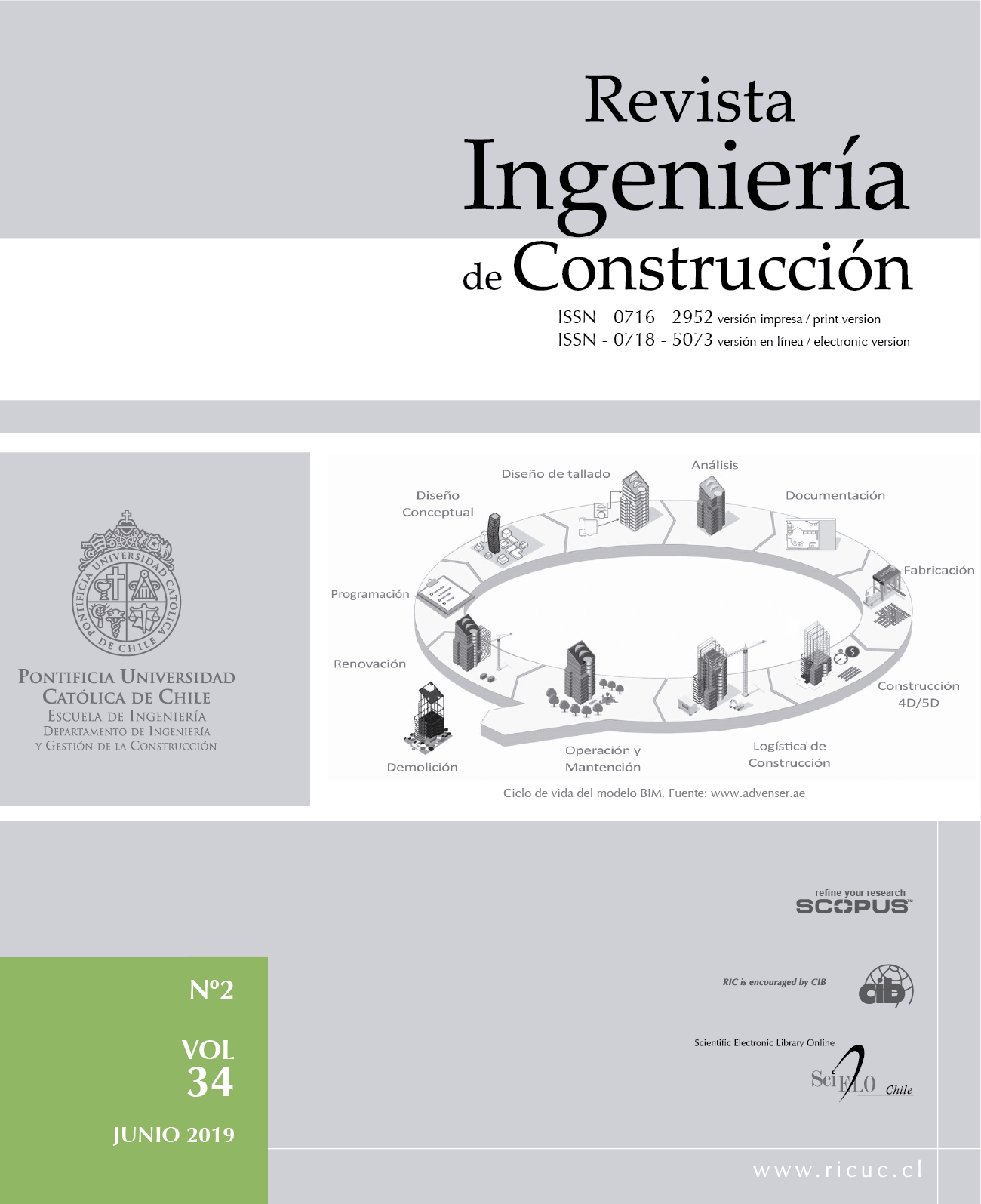Experimental and theoretical characterization of steel asymmetrical connections prone to bolt failure
DOI:
https://doi.org/10.4067/S0718-50732019000200193Keywords:
Steel connection, Asymmetrical connection, Distance between bolts, Distance from bolt to edge, Asymmetrical connection stiffnessAbstract
This article describes and proposes a model of the force versus elongation behaviour of asymmetrical connections prone to bolt failure when subjected to quasi-static axial load. 14 connections were assembled with one bolt varying the distance from the bolt to the edge of the clamped zone, and 14 connections were assembled with two bolts varying the distance between bolts. Results show that the axial force versus elongation behaviour of the connection is approximately trilinear, that while the connection stiffness is not sensitive to the bolt location in the clamped zone, the plastic elongation of the connection is. The model shows that the stiffness of the asymmetrical connection can be predicted from the stiffness of the connection components assessed by means of spring elements or beam elements, and that the load capacity of the connection can be predicted using the dry friction theory of Coulomb and the shear bolt capacity.


